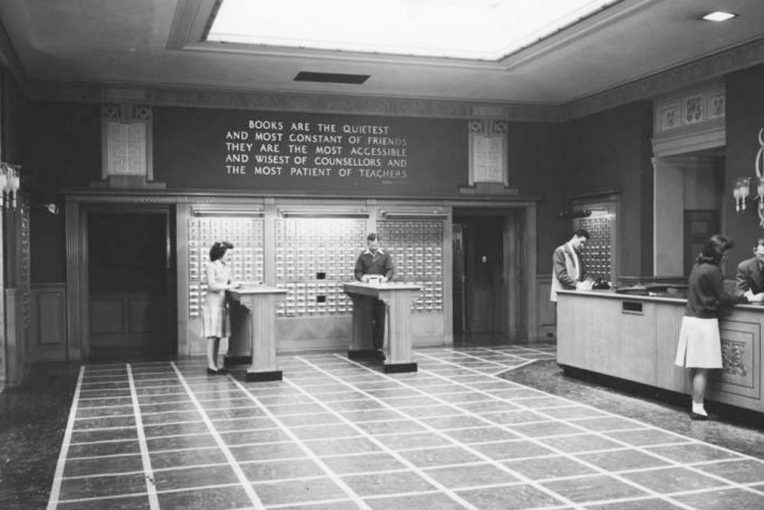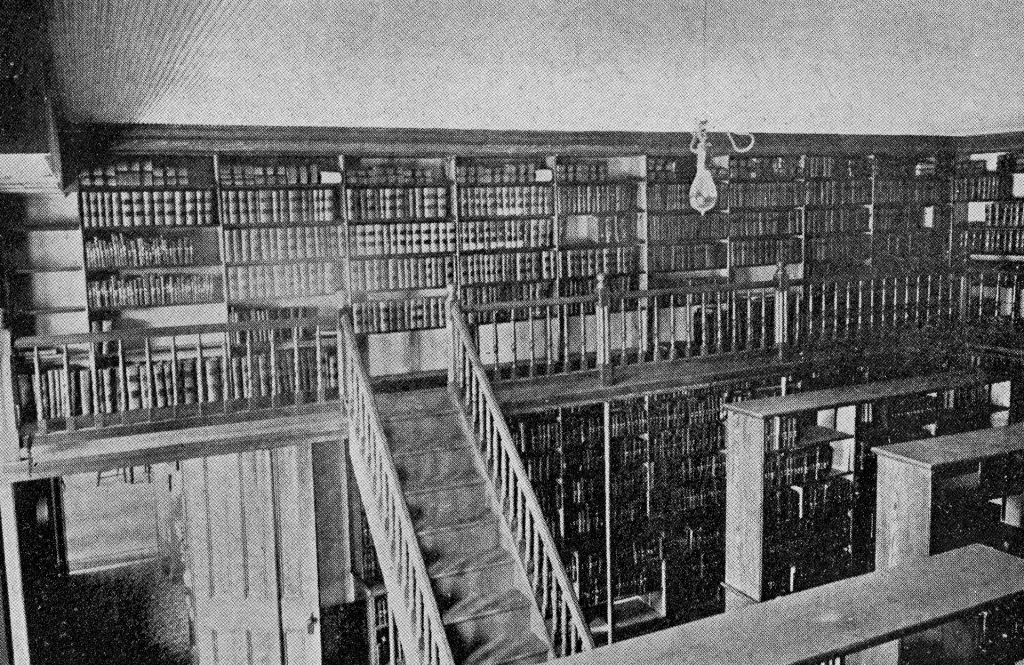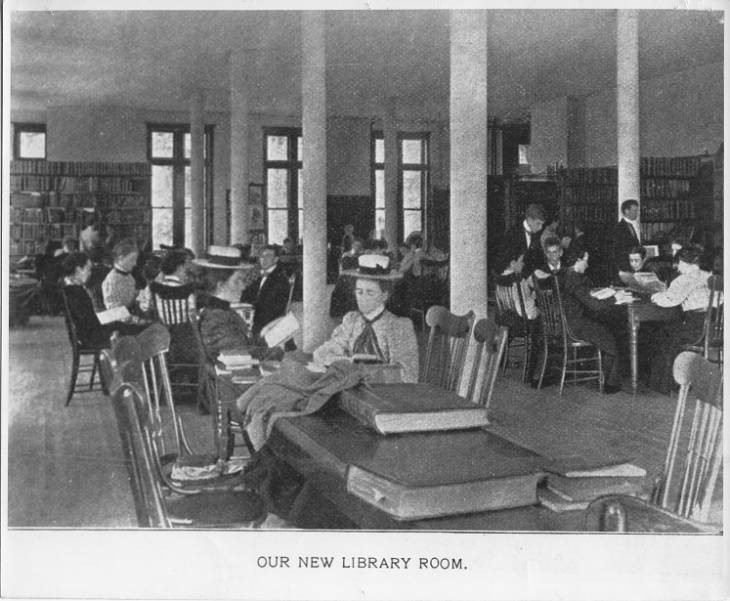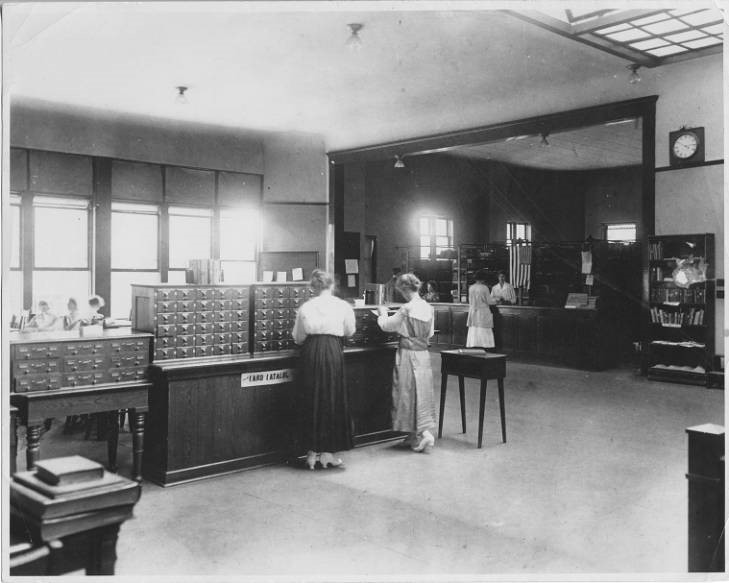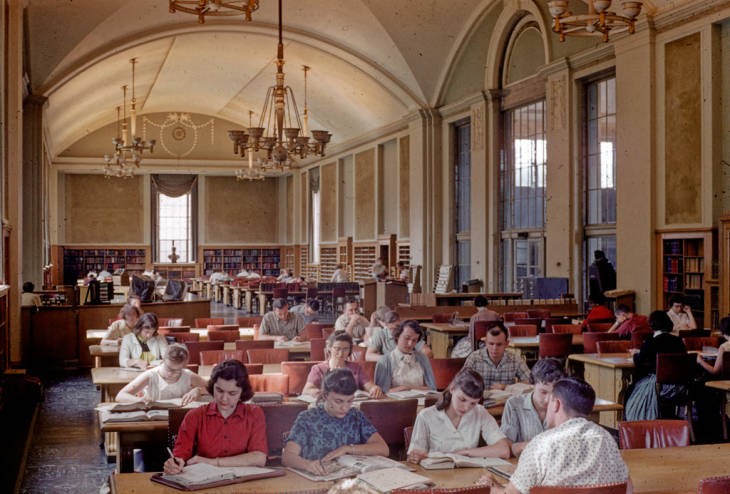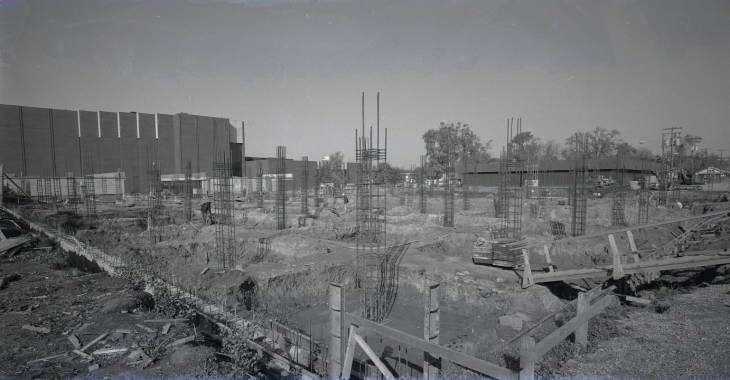April 4 through 10 is National Library Week, an annual observation used to celebrate and highlight libraries’ contributions, resources, and to promote use. Created in 1958, National Library Week is sponsored by the American Library Association and observed in all types of libraries across the country.
This year’s theme is Welcome to Your Library. There are more than 116,000 libraries across the U.S. Throughout the pandemic, library workers have adapted to meet their communities’ needs. Whether in person or virtual, libraries still offer endless opportunities to transform the lives of people through education and lifelong learning.
For more than 130 years, Illinois State University has welcomed students, faculty, staff, and community members to their library in a variety of locations on campus. In honor of National Library Week, take a walk back through history via photos from the Illinois State University Historical Photo collection courtesy of the Dr. Jo Ann Rayfield University Archives and see how ISU’s campus library has evolved.
Humble Beginnings
During ISU’s first 30 years, the duties of a librarian were covered by the president, his staff, or students. When Angeline V. Milner began as the University’s first librarian in 1890, the library occupied a very small area in a building known as Old Main. At that time, Old Main was located at the north end of the Quad in the space between where Schroeder and Felmley halls now stand. The building were torn down in the late 1950s.
Within her first few years as librarian, Ange advocated for more space leading to then-President John Cook to give up his own two-room office so that the University’s library could include a reading room. However, within a few years this space also became too small to meet campus needs and the library would be on the move again, this time to a different building.
Cook Hall 1898-1914
In 1898, Cook Hall opened with the dual purpose of serving as the gymnasium and library. The library was a single room located on the second floor above the gym. While Cook Hall had electricity, funds hadn’t been appropriated for light fixtures. The library had to close at 4 p.m. each evening until money could be saved to purchase lights, which would take about three years. By 1910, the University’s and library’s continued growth would lead to the Cook Hall space being too cramped, meaning the library would once again need a new home.
North Hall 1914-1940
After its move in 1914, the library was located on the newly renovated second floor of North Hall. The space was described as light, airy, and spacious. It included an office for Ange and a dedicated classroom space for library instruction sessions. The new space also allowed for library hours to be expanded to include evening access. North Hall marked the last location that Ange would serve the University as a librarian, as her health led her to retire in 1927.
North Hall was originally built in 1892 to serve as a practice school. It sat on the north end of the Quad, behind where Old Main once stood, approximately in the area of where the College Avenue bridge now stands. North Hall was torn down in the 1960s.
Williams Hall 1940-1976
Williams Hall was the first location that really allowed for Ange’s vision for a campus library to be realized. It included a museum with four exhibit rooms and an art gallery in the basement. More informal student spaces included a Browsing Room for recreational reading and the sound-proof Carnegie Room with a record player and 1,000 albums. Williams Hall also included a beautiful reading room, pictured below. The hand-carved tables seen in this picture are still used by students today in the open study area in the southwest corner of Floor 2. And although the Williams Hall location was the first University library that Ange Milner didn’t work at, she was not forgotten. The name Milner Library was officially adopted at a dedication ceremony on June 10, 1940.
When the library space in Williams Hall opened, it served 1,820 students. By the late 1960s, ISU’s student population would grow to 11,000 leading this space to also outgrow enrollment and student needs. The University Committee on Future Development recommended the construction of a new library in 1968, and construction began on the current building in 1972.
Present Building
When the present-day Milner Library opened, ISU’s student body had grown to 19,000. Work that had originally been handled by a single person had grown to a full-time team of more than 70 librarians and staff. What was once housed in a 160-square foot entryway flourished in a 224,000-square foot building. And while many of the same materials and services remained, technology was becoming another resource that drew campus to the library.
This year will be the library’s 45th year in the current building, making this space the longest the library has stayed in one location. While the building has remained the same, services and resources have been reimagined time and time again in order to serve the University. And now, patrons can access much of what the library has to offer without stepping foot inside the doors. Technology now allows access to many materials, collections, and even the ability to connect with librarians for virtual research help from anywhere, sometimes at any hour of the day.
Celebrate National Library Week with Milner
Milner Library continues to evolve to meet the ever-changing needs of the communities we serve. Collection materials, technology, and resources progress as our student population and campus needs change. One thing that has and will continue to remain the same is the proud tradition of service that Ange started when she welcomed the first students to their library in 1890.
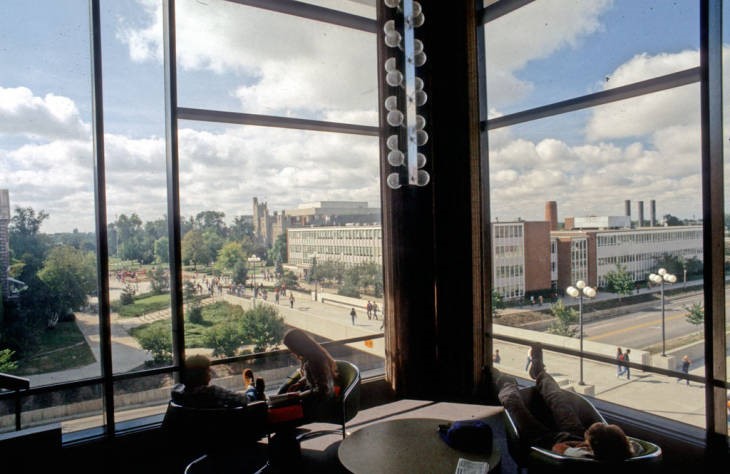
Looking for more campus and/or library history? Join Alumni Engagement on Wednesday, April 7, for their Historic Quad Talk as part of spring homecoming and learn more about the library science program at Illinois State University with University Archivist April Anderson-Zorn on Thursday, April 8. Be sure to also follow Milner on Facebook, Instagram, and Twitter throughout the week to celebrate the importance of libraries—and a chance to win prizes.
Sources:
Bonnell, Angela L., “Slide deck 01: Old Main (3 panels)” (2018). Serving Students: The Legacy of Milner’s Library. 14. https://ir.library.illinoisstate.edu/servingstudents/14
Dr. Jo Ann Rayfield University Archives’ Illinois State University Historical Photos collection
